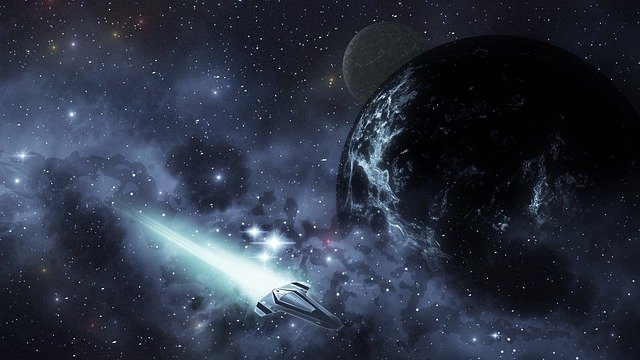NASA and partners are working on nuclear propulsion systems for spacecraft
 The NASA and her partners are working on nuclear propulsion for spacecraft. The idea for atomic rocket engines came about in the 1940s. But only now do we have the technology that will make the concept of interplanetary, nuclear-powered travel a reality.
The NASA and her partners are working on nuclear propulsion for spacecraft. The idea for atomic rocket engines came about in the 1940s. But only now do we have the technology that will make the concept of interplanetary, nuclear-powered travel a reality.
It is very important that the ideas that the NASA works, involve the use of nuclear engines outside the earth. The vehicles are to be started with chemical fuel engines and the nuclear engine is to start only outside of low earth orbit.
The greatest challenge was and is to design a safe and lightweight nuclear drive. This is ensured by new fuels and reactors. So high are the hopes for them that NASA is even considering manned missions using atomic decay energy. "Nuclear propulsion will be very useful if we think about traveling to and from Mars in less than two years," said Jeff Sheehy, chief engineer of the Space Technology Mission Directorate. The biggest challenge is making the right progress on fuel, he adds. Such a fuel would have to withstand very high temperatures and drive conditions. The two companies NASA works with make sure they have the right fuel and reactor.
Image source: Pixabay
Atomic drives are supposed to use the energy from the decay of atomic nuclei to heat liquid hydrogen to 2430 degrees Celsius. That is 8 times the core temperature of a typical nuclear power plant. The hydrogen heated in this way is supposed to expand and exit the engine nozzles at enormous speed. In this way, twice more thrust is generated per unit mass of fuel than the chemical fuels currently used. This allows the vehicle to move faster and fly longer. An additional benefit of using a nuclear powered engine would be the fact that after reaching its target - for example one of Saturn's moons - the reactor can switch from propulsion mode to power source mode and power scientific instruments for many years, such as sending high quality photos.
To get the appropriate boost from the Nuclear engine The use of highly enriched fuel is required to obtain this. Such a fuel would be safer to use, as in nuclear power plants, but under conditions of high propulsion temperature and the presence of highly reactive hydrogen it would become brittle.
Ultra Safe Nuclear Corp. Technologies (USNC Tech)with the NASA collaborates, reports that it enriches its uranium below 20%. That is more than with nuclear reactors, but less than with nuclear weapons. Its fuel consists of microscopic, ceramic-coated uranium capsules that lie on a zirconium carbide matrix. The microcapsules hold the reaction by-products in place while allowing the heat to escape.
The main difference between the two companies' projects is the use of different moderators. The moderator's task is to slow down the neutrons from the atomic decay in such a way that they support the chain reaction. BWX has placed its fuel blocks between the hydrides while the USNC tech project uses beryllium as a moderator. The thermonuclear reaction drive can, at least in theory, be clearly superior to the nuclear drive. It delivers up to 4 times more energy. However, the technology of thermonuclear reaction is still underdeveloped and the specialists have to overcome many obstacles such as obtaining and maintaining the plasma and effectively converting the obtained energy into thrust. Therefore, as Cohen admits, it is unlikely that fusion propulsion technology will be ready by the late 2030s, when the planned manned mission to Mars begins.